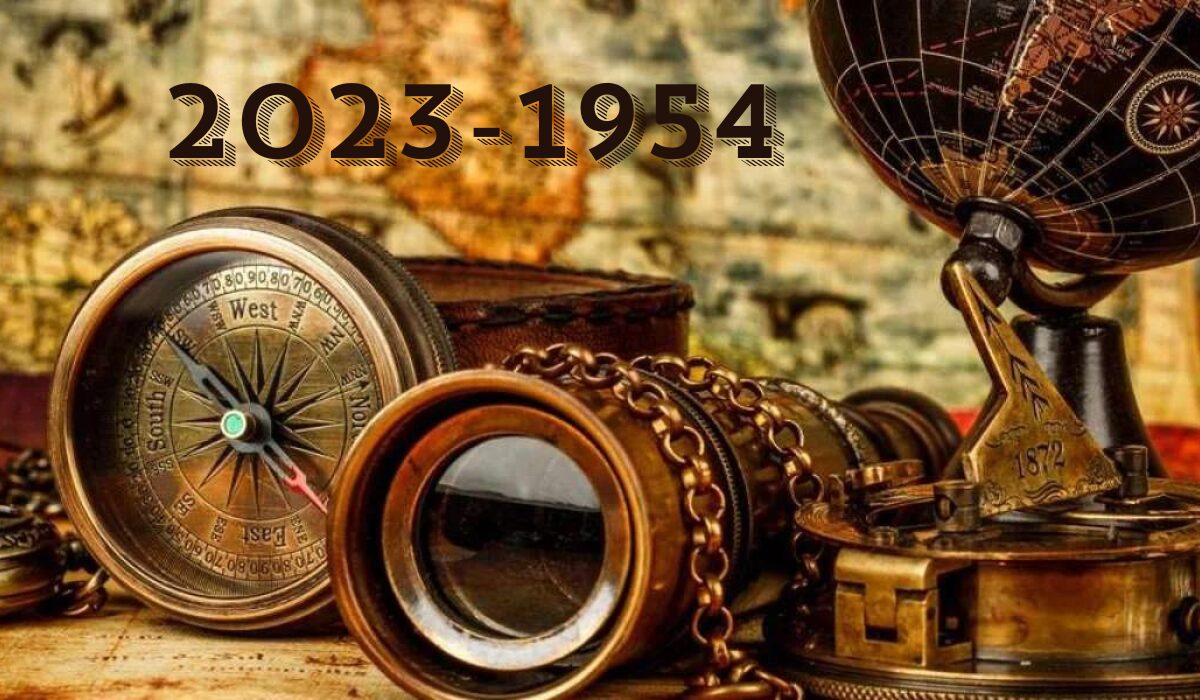History is more than just dates and events; it’s the tapestry of human experience that shapes our present and future. Exploring key historical events from 1954 to 2023 offers a fascinating lens into how our world has evolved, revealing lessons about our society, politics, and technology that resonate today. Whether you’re a casual observer or a dedicated history enthusiast, this comprehensive exploration will deepen your understanding of pivotal moments that have defined our existence.
Setting the Stage for Historical Significance
Every decade carries its own unique narrative—a blend of cultural shifts, political upheavals, and technological advancements. This blog post aims to take you on a chronological trip through time, highlighting critical events that have molded societies across the globe. From the aftermath of World War II to the rapid technological innovations in recent years, we will unearth the underlying currents that have influenced contemporary life.
Throughout this exploration, readers can expect to learn how events in the past are still echoed in today’s headlines. Understanding these historical moments is crucial; they not only inform us about where we’ve come from but also guide us in shaping a better future.
Major Global Changes and Technological Advancements
The span from 1954 to 2023 has been marked by significant transformations in the global landscape. The end of colonialism, the rise of superpowers, and the advent of the internet are just a few examples of how the world has changed. Alongside these geopolitical shifts, technological advancements have altered the fabric of daily life—impacting how we communicate, work, and relate to one another.
In the realm of technology, the leap from rotary phones to smartphones illustrates just one facet of this monumental shift. Innovations in transportation, healthcare, and education have paved the way for a more interconnected and efficient world.
Understanding these changes helps us appreciate the complexities of modern society. Each event and advancement contributes to a larger narrative that shapes our identity as global citizens.
The 1950s – A Post-War Era of Change
The 1950s marked the beginning of a new chapter in global history as countries grappled with the aftermath of World War II. The United States emerged as a superpower, while the Soviet Union strengthened its influence, leading to the Cold War—a political and ideological standoff that would define global relations for decades.
The Cold War Begins
The Cold War’s roots can be traced back to the differing ideologies of capitalism and communism. In the 1950s, tensions escalated through various events, including the Korean War and the establishment of NATO and the Warsaw Pact. These alliances signaled a division of the world into opposing camps and created a sense of fear and distrust that permeated international relations.
Civil Rights Movement in the U.S.
Simultaneously, the Civil Rights Movement began to gain momentum in the United States. Activists fought against racial segregation and discrimination, leading to landmark events such as the Brown v. Board of Education ruling in 1954 and the Montgomery Bus Boycott in 1955. These actions fueled a national conversation about equality and justice and laid the groundwork for future progress.
Technological Advancements
The 1950s also saw significant advancements in technology, including the development of the hydrogen bomb and the launch of Sputnik by the Soviet Union in 1957. This marked the beginning of the space race, escalating competition between the U.S. and the USSR and igniting public interest in science and technology.
Understanding the socio-political landscape of the 1950s is crucial for grasping the complexities of the decades that followed. The tensions of this era shaped not only national policies but also cultural shifts that resonate today.
The 1960s – Counterculture and Exploration
The 1960s were a decade of rebellion, transformation, and discovery. The counterculture movement emerged, challenging societal norms and advocating for peace and love amidst the backdrop of the Vietnam War.
Rise of Counterculture
Young people began to reject traditional values in favor of alternative lifestyles, leading to the rise of movements such as the hippie movement, anti-war protests, and a newfound emphasis on civil liberties. Music festivals like Woodstock symbolized this counterculture, highlighting a spirit of unity and freedom.
Space Exploration
Meanwhile, the space race reached new heights as the United States aimed to land a human on the moon. 1969 witnessed the historic Apollo 11 mission, with Neil Armstrong’s famous words, “That’s one small step for man, one giant leap for mankind.” This achievement not only united Americans in pride but also showcased the potential of human ingenuity.
Vietnam War
However, not all events of the 1960s were celebratory. The Vietnam War ignited fierce protests and divided the nation. The gruesome realities of war were broadcasted on television, leading to increasing public dissent and calls for peace. This conflict profoundly impacted American society, shaping future military and foreign policies.
The 1960s served as a crucible for social change and innovation. Understanding this decade helps us recognize the foundations for the movements and technologies that shape our current society.
The 1970s – Economic Shifts and Environmental Awareness
The 1970s marked a significant turning point in global economics and environmental consciousness, as societies began to grapple with issues that would have far-reaching implications.
Economic Changes
The decade experienced economic turbulence, highlighted by the oil crisis of 1973. OPEC’s oil embargo led to fuel shortages and inflation, prompting a reevaluation of energy policies worldwide. Countries began to explore alternative energy sources, shifting their focus towards sustainability.
Rise of Environmentalism
The environmental movement gained traction during this time, culminating in the first Earth Day in 1970. Activists pushed for legislation to protect the environment, leading to the establishment of key regulations, including the Clean Air Act and the Environmental Protection Agency.
Cultural Shifts
Culturally, the 1970s saw the emergence of new forms of expression, including disco music and punk rock. These genres provided an outlet for rebellion against societal norms and reflected the diversity of thought within communities.
The developments of the 1970s remind us of the interconnectedness of our world. Economic decisions have lasting implications on culture and society, challenging us to consider the consequences of our actions.
The 1980s – The Tech Revolution and Cold War Conclusion
The 1980s brought a wave of technological advancement and significant geopolitical shifts. The era was marked by the rise of personal computing and the eventual thawing of Cold War tensions.
Technological Advancements
The introduction of personal computers revolutionized the way people interacted with technology. Companies like Apple and Microsoft made computers accessible to the masses, changing the landscape of business, education, and communication forever.
End of the Cold War
Politically, the 1980s saw the decline of the Soviet Union, with Mikhail Gorbachev’s policies of glasnost (openness) and perestroika (restructuring) leading to significant reforms. The fall of the Berlin Wall in 1989 marked a symbolic end to the Cold War, paving the way for a new era of global cooperation.
Cultural Impact
The 1980s also produced a unique cultural identity characterized by vibrant fashion, music, and films. The influence of pop icons like Madonna and Michael Jackson reflected a blend of creativity and consumerism that defined the decade.
The 1980s serve as a reminder of the rapid pace of change, emphasizing the importance of adaptability in both technology and politics.
The 1990s – Digital Revolution and Globalization
The 1990s ushered in the digital revolution, transforming how we communicate and engage with the world around us.
Rise of the Internet
The advent of the World Wide Web revolutionized information sharing, creating a space for global connectivity. E-commerce emerged, and companies like Amazon and eBay began reshaping retail.
Globalization
During this decade, globalization gained momentum as trade barriers fell and economies became interconnected. The North American Free Trade Agreement (NAFTA) was established, altering economic relationships between the U.S., Canada, and Mexico.
Significant Political Events
The 1990s also witnessed significant political events, including the dissolution of the Soviet Union and the end of apartheid in South Africa. Nelson Mandela’s release from prison in 1990 and subsequent election as president in 1994 marked a significant victory for human rights.
The 1990s emphasized the importance of connectivity and the implications of technology in fostering global relationships.
The 2000s to Present – Navigating a New Era
The early 21st century has been marked by significant events that continue to shape our world, including the impact of the 9/11 attacks and rapid technological innovation.
Aftermath of 9/11
The September 11, 2001 attacks reshaped global security policies, instigating the War on Terror. These events also sparked debates surrounding civil liberties and government surveillance, which continue to resonate today.
Technological Innovation
Rapid advancements in technology continued, with smartphones and social media becoming integral to daily life. The rise of platforms like Facebook and Twitter transformed communication, creating new avenues for connection and dissemination of information.
Geopolitical Changes
In recent years, geopolitical changes have included the rise of China as a global superpower, ongoing conflicts in the Middle East, and the complexities of climate change. These issues challenge leaders and citizens to find collaborative solutions for an increasingly interconnected world.
The 2000s to present highlight the importance of critical engagement with current events, pushing us to understand our role in a rapidly changing global landscape.
Reflecting on the Importance of Understanding History
Exploring key historical events from 1954 to 2023 underscores the significance of history in shaping our present and guiding our future. Each moment we’ve examined illustrates a thread in the intricate fabric of our society.
By understanding these events, we gain insights into the challenges we face today. History informs our decisions, encouraging us to learn from past mistakes and celebrate our accomplishments.
Actionable Next Steps
For history enthusiasts eager to learn more, consider these steps:
- Read Books: Explore biographies and historical texts that offer deeper insights into specific events.
- Engage with Documentaries: Visual storytelling can provide impactful perspectives on historical moments.
- Participate in Discussions: Join online forums or local groups to engage with others who share your interests.
- Visit Museums: Experiencing history firsthand can provide a tangible connection to the past.
In conclusion, understanding the key historical events from 1954 to 2023 is essential for fostering informed citizenship and promoting a more compassionate society. The past may be behind us, but its lessons continue to shape our world.
You May Also Like: Challenges and Controversies Surrounding Cumhuritey Debunking Common Misconceptions










